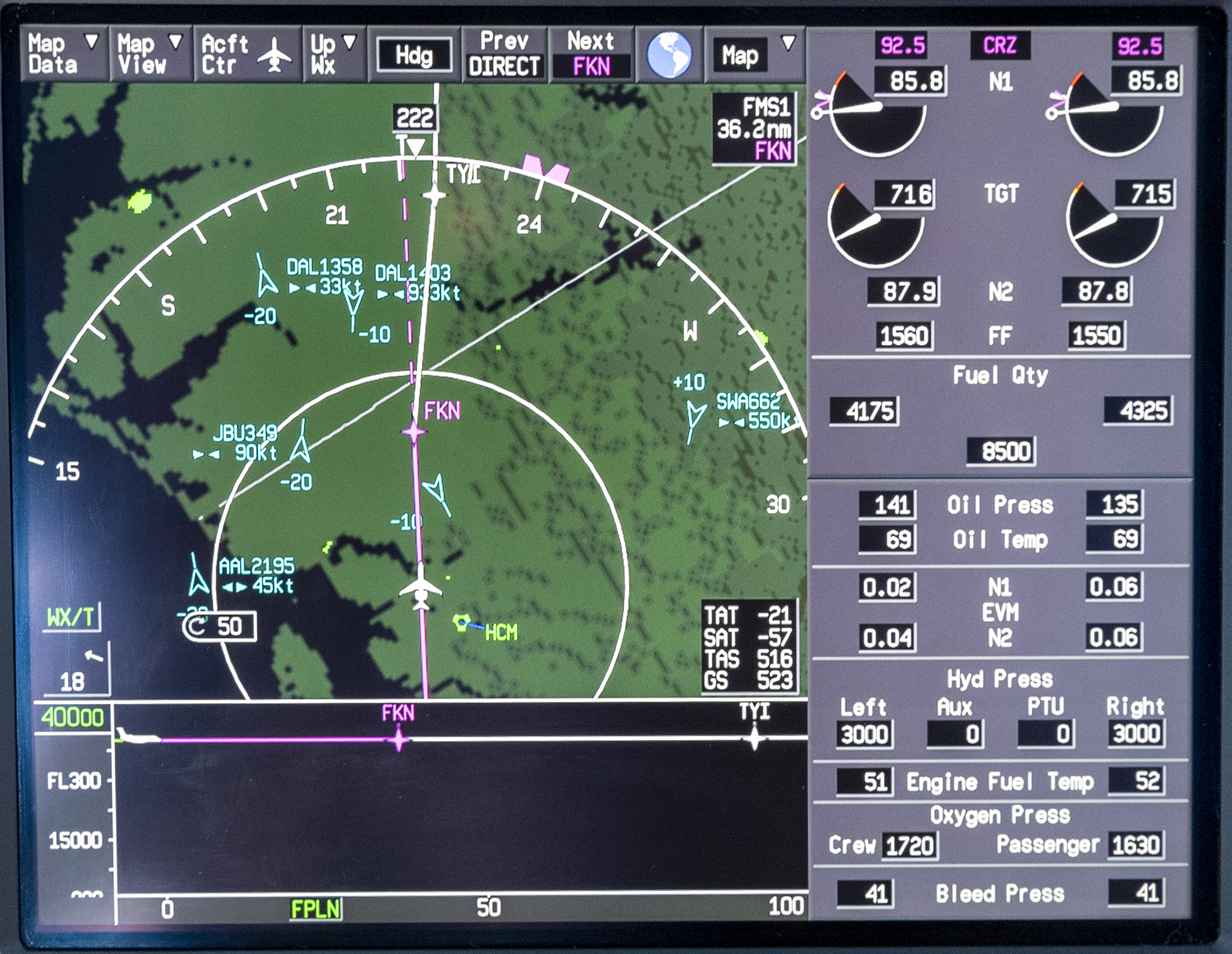Unlike ADS-C and CPDLC, there is no login procedure with ADS-B and much of its workings are transparent to the crew. ADS-B Out is becoming mandatory throughout much of the world. OpSpec/MSpec/LOA used to be required but no longer. ADS-B In is a nice to have feature but isn't, as yet, mandated by any regulatory agency.
— James Albright

Updated:
2020-12-17
There is one drawback to ADS-B Out that appears to have no work around: aircraft tracking. You can no longer mask your call sign or tail number from aircraft tracking programs or even Siri on an Apple device. Your privacy is gone.
4 — International requirements

ADS-B Airspace Rule (§91.225) Diagram, from AC 90-114, Figure 3-1.

1
Regulatory
The FAA does not require an authorization to conduct ADS-B Out operations in the airspace specified in § 91.225 (U.S. airspace). However, pilots, dispatch personnel, and maintenance personnel should be familiar with the information provided in this AC.
Source: AC 90-114, ¶1.5.2
Automatic Dependent Surveillance-Broadcast (ADS-B) Out equipment and use.
(a) After January 1, 2020, and unless otherwise authorized by ATC, no person may operate an aircraft in Class A airspace unless the aircraft has equipment installed that—
(1) Meets the performance requirements in TSO-C166b, Extended Squitter Automatic Dependent Surveillance-Broadcast (ADS-B) and Traffic Information Service-Broadcast (TIS-B) Equipment Operating on the Radio Frequency of 1090 Megahertz (MHz); and
(2) Meets the requirements of §91.227.
(b) After January 1, 2020, and unless otherwise authorized by ATC, no person may operate an aircraft below 18,000 feet MSL and in airspace described in paragraph (d) of this section unless the aircraft has equipment installed that—
(1) Meets the performance requirements in—
(i) TSO-C166b; or
(ii) TSO-C154c, Universal Access Transceiver (UAT) Automatic Dependent Surveillance-Broadcast (ADS-B) Equipment Operating on the Frequency of 978 MHz;
(2) Meets the requirements of §91.227.
(c) Operators with equipment installed with an approved deviation under §21.618 of this chapter also are in compliance with this section.
(d) After January 1, 2020, and unless otherwise authorized by ATC, no person may operate an aircraft in the following airspace unless the aircraft has equipment installed that meets the requirements in paragraph (b) of this section:
(1) Class B and Class C airspace areas;
(2) Except as provided for in paragraph (e) of this section, within 30 nautical miles of an airport listed in appendix D, section 1 to this part from the surface upward to 10,000 feet MSL;
(3) Above the ceiling and within the lateral boundaries of a Class B or Class C airspace area designated for an airport upward to 10,000 feet MSL;
(4) Except as provided in paragraph (e) of this section, Class E airspace within the 48 contiguous states and the District of Columbia at and above 10,000 feet MSL, excluding the airspace at and below 2,500 feet above the surface; and
(5) Class E airspace at and above 3,000 feet MSL over the Gulf of Mexico from the coastline of the United States out to 12 nautical miles.
(e) The requirements of paragraph (b) of this section do not apply to any aircraft that was not originally certificated with an electrical system, or that has not subsequently been certified with such a system installed, including balloons and gliders. These aircraft may conduct operations without ADS-B Out in the airspace specified in paragraphs (d)(2) and (d)(4) of this section. Operations authorized by this section must be conducted—
(1) Outside any Class B or Class C airspace area; and
(2) Below the altitude of the ceiling of a Class B or Class C airspace area designated for an airport, or 10,000 feet MSL, whichever is lower.
(f) Each person operating an aircraft equipped with ADS-B Out must operate this equipment in the transmit mode at all times unless—
(1) Otherwise authorized by the FAA when the aircraft is performing a sensitive government mission for national defense, homeland security, intelligence or law enforcement purposes and transmitting would compromise the operations security of the mission or pose a safety risk to the aircraft, crew, or people and property in the air or on the ground; or
(2) Otherwise directed by ATC when transmitting would jeopardize the safe execution of air traffic control functions.
(g) Requests for ATC authorized deviations from the requirements of this section must be made to the ATC facility having jurisdiction over the concerned airspace within the time periods specified as follows:
(1) For operation of an aircraft with an inoperative ADS-B Out, to the airport of ultimate destination, including any intermediate stops, or to proceed to a place where suitable repairs can be made or both, the request may be made at any time.
(2) For operation of an aircraft that is not equipped with ADS-B Out, the request must be made at least 1 hour before the proposed operation.
(h) The standards required in this section are incorporated by reference with the approval of the Director of the Office of the Federal Register under 5 U.S.C. 552(a) and 1 CFR part 51. All approved materials are available for inspection at the FAA's Office of Rulemaking (ARM-1), 800 Independence Avenue, SW., Washington, DC 20590 (telephone 202-267-9677), or at the National Archives and Records Administration (NARA). For information on the availability of this material at NARA, call 202-741-6030.
(1) Copies of Technical Standard Order (TSO)-C166b, Extended Squitter Automatic Dependent Surveillance-Broadcast (ADS-B) and Traffic Information Service-Broadcast (TIS-B) Equipment Operating on the Radio Frequency of 1090 Megahertz (MHz) (December 2, 2009) and TSO-C154c, Universal Access Transceiver (UAT) Automatic Dependent Surveillance-Broadcast (ADS-B) Equipment Operating on the Frequency of 978 MHz (December 2, 2009) may be obtained from the U.S. Department of Transportation, Subsequent Distribution Office, DOT Warehouse M30, Ardmore East Business Center, 3341 Q 75th Avenue, Landover, MD 20785; telephone (301) 322-5377.
(2) Copies of Section 2, Equipment Performance Requirements and Test Procedures, of RTCA DO-260B, Minimum Operational Performance Standards for 1090 MHz Extended Squitter Automatic Dependent Surveillance-Broadcast (ADS-B) and Traffic Information Services-Broadcast (TIS-B), December 2, 2009 (referenced in TSO-C166b) and Section 2, Equipment Performance Requirements and Test Procedures, of RTCA DO-282B, Minimum Operational Performance Standards for Universal Access Transceiver (UAT) Automatic Dependent Surveillance-Broadcast (ADS-B), December 2, 2009 (referenced in TSO C-154c) may be obtained from RTCA, Inc., 1828 L Street, NW., Suite 805, Washington, DC 20036-5133, telephone 202-833-9339. Copies of RTCA DO-260B and RTCA DO-282B are also available on RTCA Inc.'s Web site, at https://www.rtca.org/.
Source: 14 CFR 91, §91.225
2
System
System Description
2.2.1 ADS-B System Architecture. The ADS-B system architecture is composed of aircraft avionics and an Air Traffic Service Provider (ATSP) infrastructure. Onboard “position source” avionics determine the position of the aircraft, typically by using the Global Navigation Satellite Systems (GNSS) and transmitting this and additional information about the aircraft to receiver stations for use by ATC, to ADS-B In-equipped aircraft, and to other aviation service providers.
2.2.2 ADS-B Operating Frequencies. In the United States, the ADS-B system operates on two frequencies: 1090 or 978 megahertz (MHz). See Chapter 3, Figure 3-1, Automatic Dependent Surveillance-Broadcast Airspace Rule (§ 91.225) Diagram, for airspace and frequency requirements.
2.2.2.1 The 1090 MHz Frequency. The 1090 MHz frequency is associated with current Mode A, C, and S transponder operations. ADS-B information is included in Mode S transponders’ Extended Squitter (ES) transmit messages, and referred to as 1090ES in this AC.
2.2.2.2 The 978 MHz Frequency. ADS-B equipment operating on 978 MHz are referred to as Universal Access Transceivers (UAT) in this AC.
2.2.3 ADS-B Avionics Operating Modes. ADS-B avionics can have the ability to both transmit and receive information.
2.2.3.1 ADS-B Out. The transmission of ADS-B information from aircraft is known as ADS-B Out.
2.2.3.2 ADS-B In. The receipt of ADS-B information by an aircraft is known as ADS-B In.
Source: AC 90-114B, ¶2.2
In general, operators flying at 18,000 feet and above (Class A airspace) are required to have 1090ES equipment. Those that do not fly above 18,000 may use either UAT or 1090ES equipment. (Refer to 14 CFR §§ 91.225 and 91.227.)
Source: AIM, ¶4-5-7.a.4.
Situational Awareness
ADS-B Out is what has been mandated in the U.S. and other parts of the world. It is simply a way to broadcast your position and other information to other ADS-B users, normally Air Traffic Control. You can be one of those users if you have ADS-B In, which allows your avionics to display that information. There is no requirement, as of late 2020, mandating you have ADS-B In.
Most ADS-B In systems will include a flight deck traffic display depicting the relative position and related information of ADS-B-equipped aircraft presented on a plan view. This traffic display is only one component of the input and output devices collectively known as a Cockpit Display of Traffic Information (CDTI). The traffic display may be on a dedicated display or integrated into and presented on an existing display (e.g., navigation display (ND) or multifunction display (MFD)). The terms traffic display and CDTI are used interchangeably when the meaning is clear in context. In many installations, a moving map depicting key surface elements of the airport may be displayed when on the ground or within a predefined altitude/distance from an airport while airborne.
Source: AC 90-114, ¶2.4.1
For more about this: ADS-B In.
3
Operating procedures
Transmit Requirements
In accordance with § 91.225(f), each person operating an aircraft equipped with ADS-B Out must operate this equipment in the transmit mode at all times, unless authorized by the FAA or directed by air traffic control (ATC). This equipment operation requirement pertains to all phases of flight operation, including airport surface movement area operations. Pilots should select the transponder mode that enables the altitude reporting and ADS-B Out transmissions any time their aircraft is positioned on any portion of an airport movement area.
Source: AC 90-114B, ¶4.3.1
Operation of Aircraft with Inoperative ADS-B
Section 91.225(g) permits ATC to authorize the operation of aircraft with inoperative ADS-B or that do not have ADS-B installed into airspace where it is required. Under § 91.225(g), operators must make requests for ATC-authorized deviations from the requirements in § 91.225 to the ATC facility that has jurisdiction over the concerned airspace or airport movement area within the time periods specified below:
- For operation of an aircraft with inoperative ADS-B equipment to the airport of ultimate destination (including any intermediate stops) or to proceed to a place where suitable repairs can be made, or both, the request may be made at any time.
- For operation of an aircraft that is not equipped with ADS-B, operators must make the request at least 1 hour before the proposed operation.
Source: AC 90-114B, ¶4.3.3
The ADS−B cockpit display of traffic is NOT intended to be used as a collision avoidance system and does not relieve the pilot’s responsibility to “see and avoid” other aircraft. ADS−B must not be used for avoidance maneuvers during IMC or other times when there is no visual contact with the intruder aircraft. ADS−B is intended only to assist in visual acquisition of other aircraft. No avoidance maneuvers are provided or authorized, as a direct result of an ADS−B target being displayed in the cockpit.
Source: AIM, ¶4-5-7.e.
4
International requirements
EASA
Note 1: The European Union Aviation Safety Agency’s (EASA) publication, Certification Specifications and Acceptable Means of Compliance for Airborne Communications, Navigation and Surveillance (CS-ACNS), also provides specifications associated with the installation and airworthiness approval of ADS-B Out equipment in Europe. ADS-B equipment that complies with CS-ACNS complies with §§ 91.225 and 91.227.
Note 2: Outside the U.S. NAS, many worldwide Air Traffic Service Providers (ATSP) allow the use of ADS-B equipment certified to the EASA Acceptable Means of Compliance (AMC) 20-24, Certification Considerations for the Enhanced ATS in Non-Radar Areas using ADS-B Surveillance (ADS-B-NRA) Application via 1090 MHz Extended Squitter. EASA AMC 20-24 is intended for Non-Radar Areas (NRA).
Source: AC 90-114, ¶1.5.3
In general, most areas of the world do not require the use of ADS-B, but that is changing. If you do not have ADS-B, you will be well advised to research the Aeronautical Information Publications (AIPs) of the area you will be visiting and transiting. The following two examples are offered as representative samples.
Australia
The following table summarises the transponder or ADS-B transmitting equipment (ADS-B OUT) requirements for IFR or VFR operations in various classes of airspace or at specified aerodromes:
Source: Australia AIP, ¶6.1.3

Australia ADS-B Requirement, Australia AIP, GEN 1.5-13
Hong Kong
I've included Hong Kong because they used to require operational approval, which the U.S. FAA would not provide. The Hong Kong requirement, shown here, no longer requires such approval and the controversy no longer exists.
All aircraft flying within Hong Kong FIR at or above F290 shall be installed with ADS-B equipages complying with the requirements stipulated in paragraph 3.7.6.
3.7.2 For all aircraft flying within Hong Kong FIR equipped with ADS-B equipages not complying with paragraph 3.7.6 the ADS-B equipages shall be: a) deactivated; or b) set to transmit only a value of zero for the Navigation Uncertainty Category (NUCp) or Navigation Integrity Category (NIC) or Navigation Accuracy Category (NAC) or Source Integrity Level (SIL).
3.7.3 Aircraft not complying with paragraph 3.7.6 will not be accorded priority to operate in the designated airspace and flight level assignments would be subjected to air traffic conditions.
3.7.4 When an aircraft is ADS-B equipped but the equipment has become unserviceable during flight, the pilot in command or aircraft operator must inform ATC as soon as possible.
3.7.5 Operational approval from the State of Registry for ADS-B Out operation is no longer required.
Source: Hong Kong AIP, ¶3.7
References
(Source material)
14 CFR 91, Title 14: Aeronautics and Space, General Operating and Flight Rules, Federal Aviation Administration, Department of Transportation
Advisory Circular 90-114B, Change 1, Automatic Dependent Surveillance-Broadcast Operations, 12/15/22, U.S. Department of Transportation
Aeronautical Information Manual
Aeronautical Information Publication (AIP) Australia, 05 Nov 2020
Aeronautical Information Publication (AIP) Hong Kong, 30 Jan 2020
